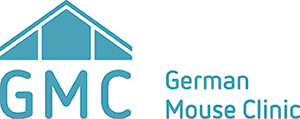Technologies of the Eye Screen
Scheimpflug Imaging
Scheimpflug images of cornea and lens are taken with the Pentacam digital camera system (Oculus GmbH, Wetzlar). Lens opacification is quantified by the densitometry tool of the provided software.
Optical Coherence Tomography
Pictures of the eye fundus and in vivo sections through the retina are taken with the Spectralis OCT system (Heidelberg Engineering, Heidelberg). Retinal thickness is calculated by the provided software.
Laser Interference Biometry (LIB)
The ACMaster (Carl Zeiss Meditec, Jena) equipped with the optical low coherence interferometry (OLCI) technique and a software optimised for the dimensions in the mouse eye is used for eye size measurements.
Virtual vision test
For the vision test with the virtual drum (MouseOptomotry System, CerebralMechanics, Lethbridge, Kanada) a rotating cylinder covered with a vertical sine wave grating is calculated and drawn in virtual three-dimensional space on four computer monitors facing to form a square. Visually unimpaired mice track the grating with reflexive head and neck movements (head-tracking).
Electroretinography (ERG)
To record the ERG anaesthetised mice are introduced into a handheld Ganzfeld LED stimulator (Espion ColorBurst, Diagnosis LLC, Littleton, USA) on a sliding bed guided on a rail (High-Throughput Mouse ERG setup, Steinbeis-Transfer Centre for Biomedical Optics and Function Testing, Tübingen).
Histology
For the morphologic analysis eyes are embedded in plastic medium. Transverse 2 µm sections are cut with an ultramicrotome (Ultratom OMU3; Reichert, Walldorf), stained with methylene blue and basic fuchsin and evaluated with a light microscope (Axiolplan; Carl Zeiss Meditec, Göttingen).

